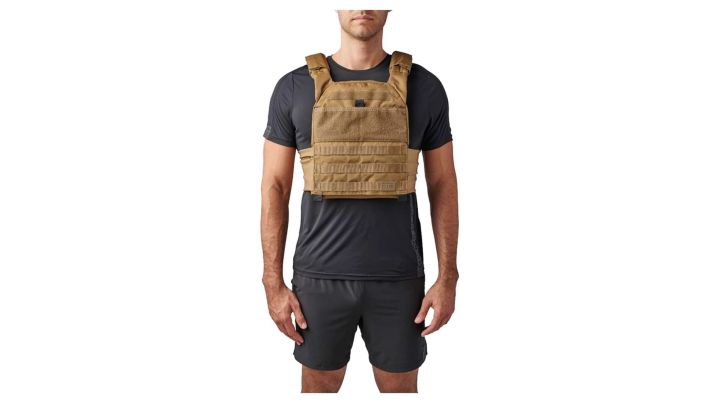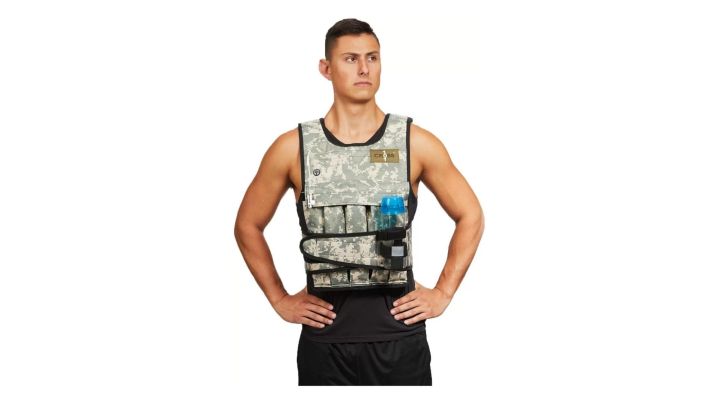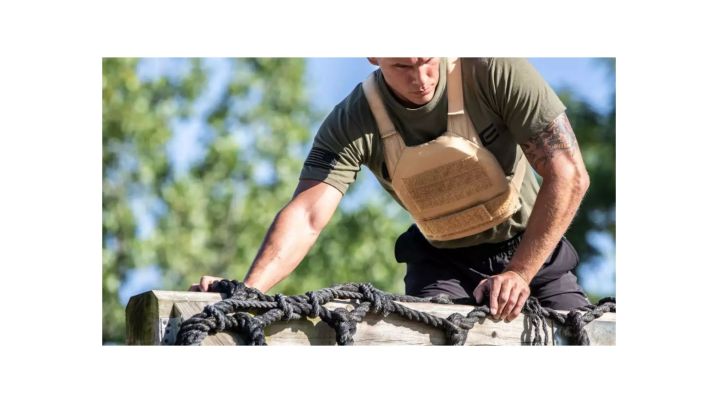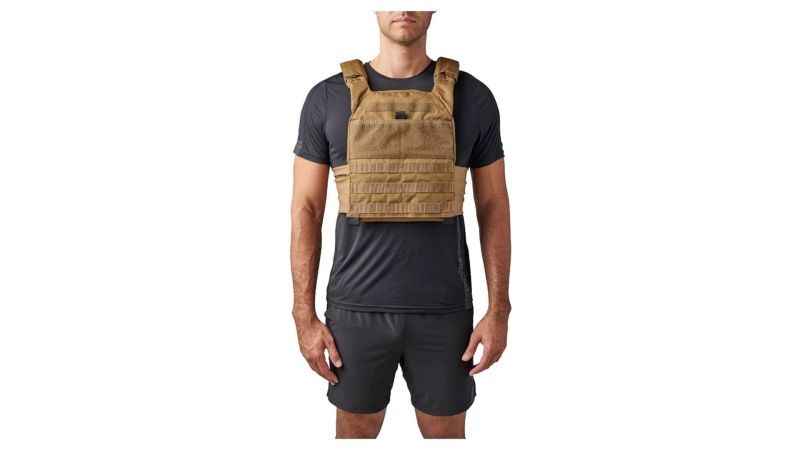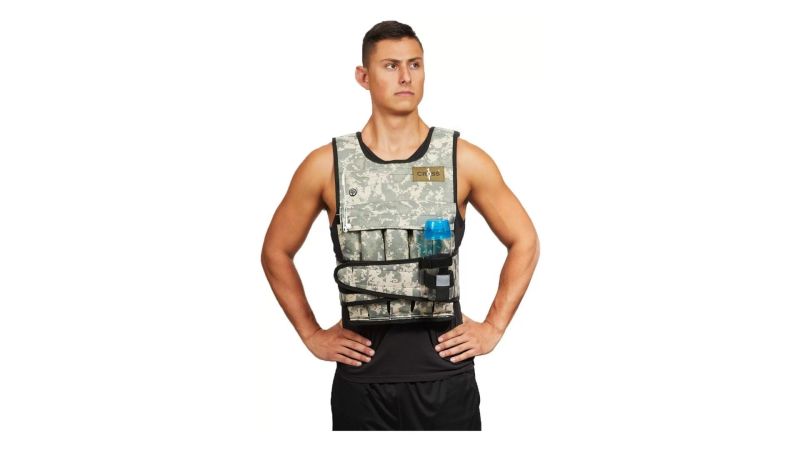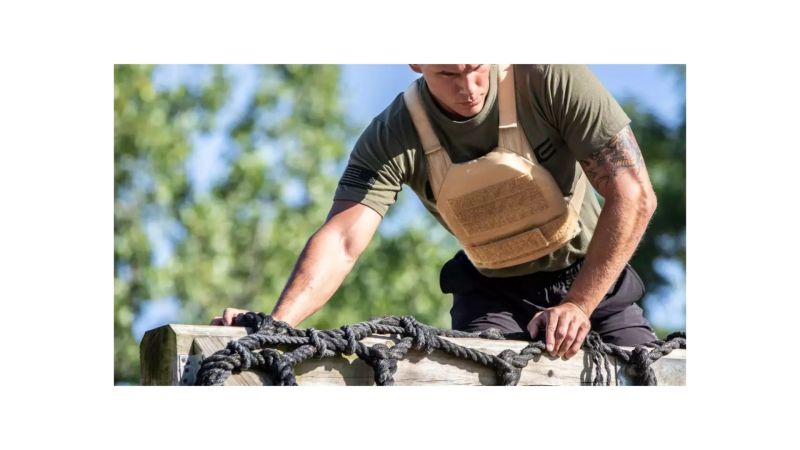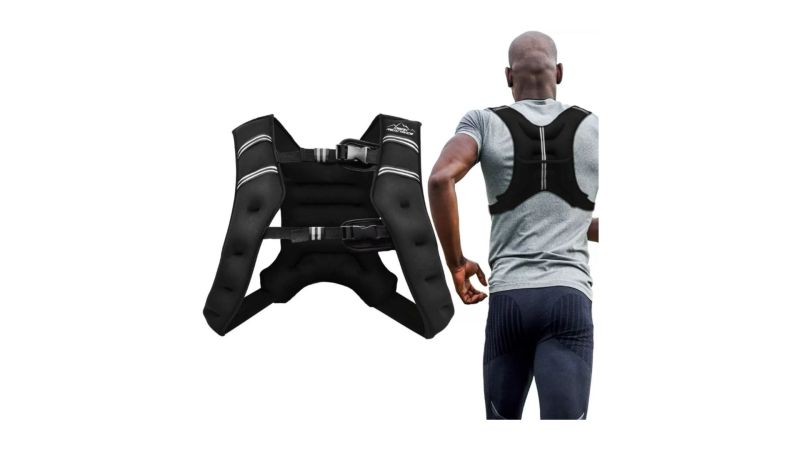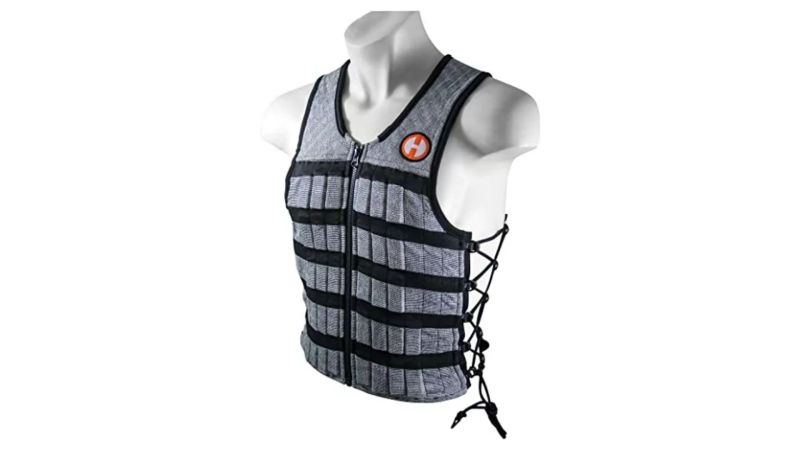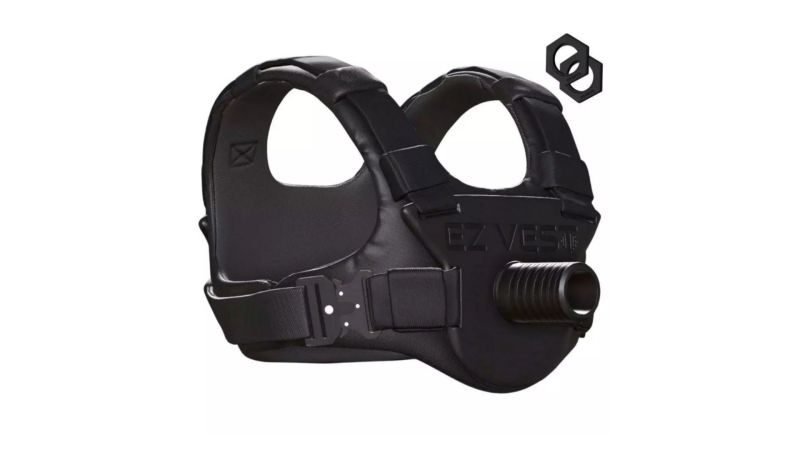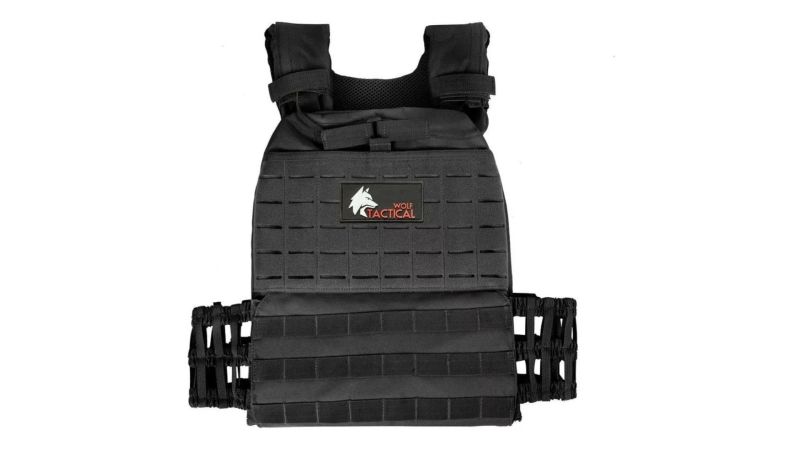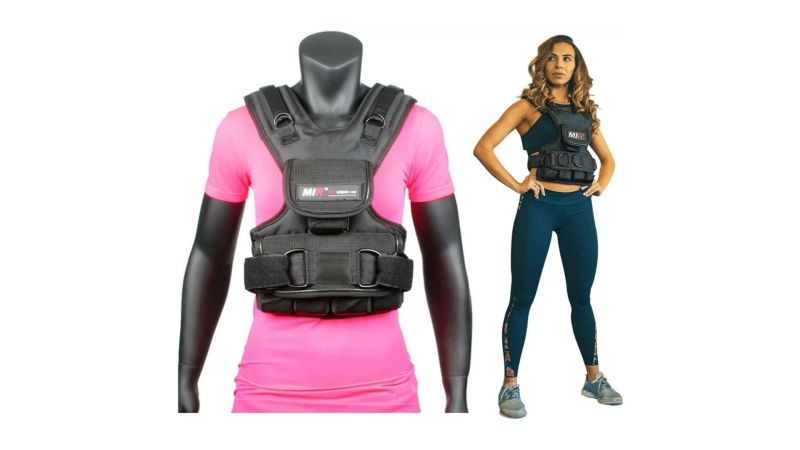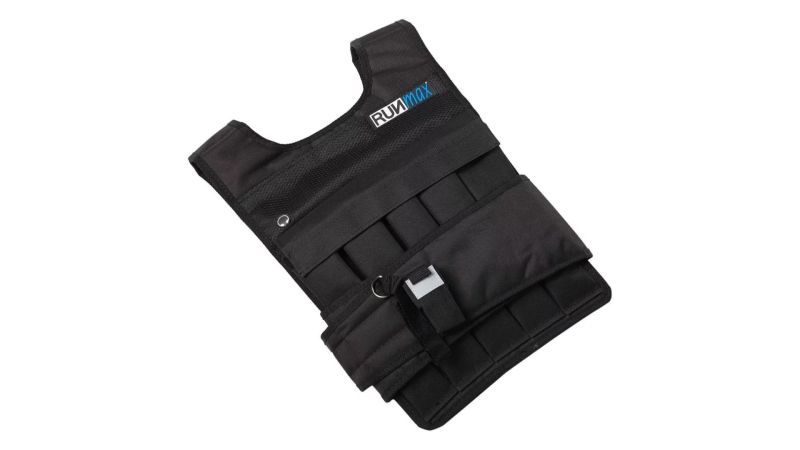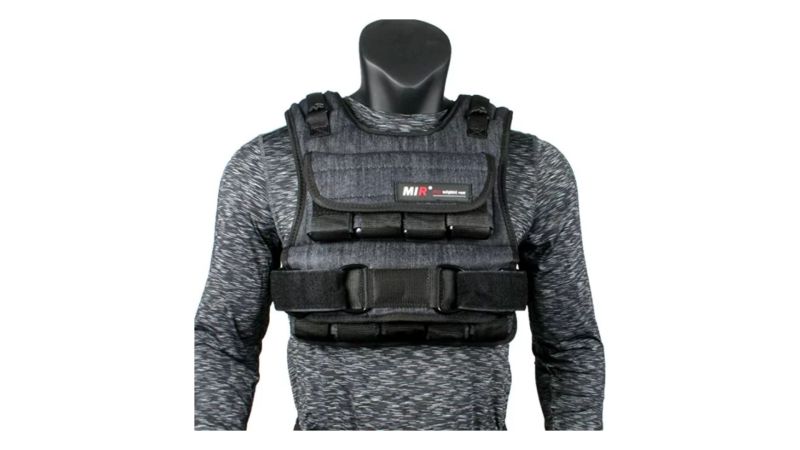We may earn revenue from the products available on this page and participate in affiliate programs.

A weighted vest could be exactly what you need to keep up with your fitness goals. Adding a weighted vest to certain workout routines is a way to find new challenges and find new ways to keep the flame burning. Sick of the gym? The hell with the gym. I do most of my workouts in my basement or my garage. Don’t have gym equipment at home? Screw gym equipment. Most of my workouts are functional, bodyweight workouts. Push-ups, pull-ups, sit-ups, dips, runs, etc. With fitness, the only barrier to entry is your brain and your will.
But what happens when your body weight is no longer enough resistance? What happens when your personal organic mass is too easy to lift or you find yourself doing a zillion reps just to get tired. Take it easy, Billy-Badass, I have a solution. Increase your body weight. And no, I don’t mean to start hammering pizza and Oreos. I mean get yourself a weighted vest.
A weighted vest is a great way to up the ante on your bodyweight workouts, ranging from regular runs to elaborate Crossfit workouts. But like most workout gear, there are a hundred different variations of the same general concept and it can be difficult to determine which weighted vest would be conducive to your own personal goals. In this article, we’ll break down our top choices and, hopefully, get you into your very own Thundershirt Of Destiny.
Best Overall
5.11 Tactical TacTec Trainer Weight Vest
Best Value
Cross101 Weighted Vest
Editor’s Choice
Rogue Plate Carrier
Best Weighted Vest For Walking
Aduro Sport Weighted Vest
Best Weighted Vest for Running
Hyperwear Hyper Vest Pro
Best Heavy-Weight Weighted Vest
Kensui EZ Vest
Best Weighted Vest for Men
Wolf Tactical Adjustable Weighted Vest
Best Weighted Vest for Women
MiR Women's Weighted Vest
Can be expensive for higher weights
RunFast/Max Adjustable Weighted Ves
Best Short Length Weighted Vest
miR Air Flow Weighted Vest
Why you should trust us
As a combat arms officer in the Army, I often had to wear body armor for long periods of time, and wearing those heavy vests forced me to learn the basics of weight distribution and comfort, or more specifically, how to avoid discomfort. I’ve found this knowledge to come in handy when exploring new fitness regiments, specifically working out while wearing a weighted vest.
Since leaving the Army, I’ve dabbled in multiple fitness fads including Crossfit. The common denominator with all of them has been functional movements and a focus on bodyweight exercises. To increase the difficulty of these workouts, I’ve tried multiple different styles of weighted vests, with varying results.
For this article, I went further down the rabbit hole by researching other available options and even conducting some hands-on testing. With this experience and information, I feel confident about the recommendations I’ve made.
Types of weighted vests
Plate carrier
Anyone who’s deployed overseas in the last 20 years has probably worn a plate carrier, IOTV (Improved Outer Tactical Vest), or—if you’re old like me—an IBA. When worn for long periods of time, I remember them becoming hot, uncomfortable, and cumbersome. So, being the suckers for punishment we are, it only seems natural to purchase one for personal recreational use.
Plate carrier vests are modeled after (and sometimes serve double duty as) military or law enforcement grade body armor. These vests are usually lifted over the head and then synched around the abdomen with Velcro straps or buckles. On the front and back of the vests are two large pockets, meant to hold cast iron or laser-cut weight plates, but can also hold some sizes of standard circular plates in a pinch. Plate carrier vests are usually made with durable Cordura fabric (strong, woven nylon or polyester) and are meant to take a beating.
Pouch vests
Okay, “Pouch Vests” isn’t really their name, but it’s the best way to describe the standard style vest that doesn’t fall into the military-style plate carrier category. Pouch vests, as their made-up name implies, are weighted vests that carry weight in a series of well-placed pouches around the torso. The pouches can be filled with a variety of different weight options, such as small iron bars or bags filled with steel shot, iron shavings, or sand. The size and quantity of the pouches on these vests allows the wearer to make more nuanced adjustments to their workout weight but forces them to pay more attention to how the weight is distributed over the body. These vests tend to be more budget-friendly than plate carriers.
Backpack vests
Backpack vests are weighted vests that leave the front of the torso open and all of the weight in the shoulders straps and back. These types of vests offer a greater range of motion for the wearer, but they typically don’t range as high in weight capacity. Backpack vests seem to be more favorable to users who intend to wear the vest while performing cardio exercises, such as running, walking, rucking, and dance-offs. Backpack vests seem to be the style most recommended for women since the open front eliminates the uncomfortable restraints of a full-front weighted vest.
Heavy-weight vests
Heavyweight vests are probably the least prevalent type, but they do exist and you should be aware of them in case you want to become a true beast of an individual. This type of vest comes with a weight sleeve (or two) built right into it. The user simply hangs standard, circular weight plates, like those you might use for bench press and squat bars, from the weight racks on the front and back and secures them down with a screw-on stopper. This type of vest is best for individuals training to become Ninja Turtles or those who simply like to horde the 45-pound plates at the gym. Please exercise caution when using these vests and never lift alone. If you fall on your back, you may not be able to right yourself, which could result in starvation or leave your fleshy underbelly vulnerable to predators.
Key features of weighted vests
Weight type
There are a number of different styles in which weighted vests are – well – weighted. One of the most popular styles is through weighted plates (used in plate carriers). These plates are usually made of cast iron or laser-cut from metal sheets. The plates slide into the front and back of the plate carrier for even weight distribution. The downside to plates is they’re generally pretty pricey and only come in larger weight increments. Non-plate carrier vests typically can be adjusted in smaller weight increments and utilize small iron/steel bars or pouches of sand, steel shot, or iron shavings. These can be more cost-efficient options, but you want to make sure you don’t go too cheap. Pouches containing iron shavings or sand have been known to rupture and can create an irritating mess on your gym floor.
Weight distribution and range of motion
One aspect you’ll want to consider when shopping for a weighted vest is what kind of weight distribution and range of motion you’ll require for your intended workouts. With most bodyweight workouts, you’re probably pretty safe getting a vest with an even weight distribution around the entire torso (or in the front and back). If you’re not careful, a bulky vest can lead to uncomfortable chafing during certain movements, especially under the arms and across the shoulders. For running or walking, you may want to lean toward a vest that either hugs your frame to prevent excessive friction or a backpack-style vest that carries more weight on the shoulders and back. Backpack-style vests used in this manner can help improve posture during cardio exercises.
Fabric
It’s good to consider the type of fabric used in the development of your weighted vests. The optimal material for users who plan to really beat up their vest is a Cordura material, which, as stated earlier, is rugged woven nylon or polyurethane. This tough fabric will help your vest stand up to wear and tear, especially if you’re outdoors rolling around in the dirt with it. These fabrics tend to be easy to clean, which is useful in a piece of gear made to be sweat in. Some weighted vests are made of neoprene material, which has its bonuses in elasticity and comfort, but lacks the durability of some other materials. A neoprene vest would also need to be washed more frequently, as neoprene can get musty and funky pretty quickly.
Closure and adjustment material
Though maybe not as important, the closure and adjustment mechanisms on your vest should be taken into consideration. These are things like Velcro straps, plastic adjustment clips, zippers, and elastic bands. A weighted vest is designed for movement, and this movement results in repetitious, weighted concussion on the user and the vest alike. It’s only natural that these points of adjustment would wear out over time, but by purchasing quality gear, you can stretch out the life of your vest. If you can, it is also worth looking into whether your vest is single or double stitched for the same reasons.
Benefits
Improved fitness
This might seem like an obvious benefit, but when you’re working out at home with limited workout equipment, it can be hard to come up with new ways to challenge yourself physically, aside from simply increasing reps. With a weighted vest (and especially an adjustable weighted vest), it’s easy to gradually step up the challenge on even the most basic bodyweight movements like push-ups, pull-ups, squats, and dips.
Tactical therapy
I might get made fun of for this, but I don’t care. If you’re a veteran, owning a weighted vest (especially a plate carrier) can trigger a fond nostalgia for when you were young and virile. Something about the feel of armor strapped across your torso and the weight pulling at your shoulders will bring back memories of when you used to do “cool guy stuff.” This alone can boost motivation during workouts and propel you into a better mode of thinking. It’s like a Thundershirt for badasses.
Space-saving
Weighted vests are a compact way to ramp up your workouts without buying a lot of big machines or an array of space-eating dumbbells and free weights. If you’re working out at home doing bodyweight, functional workouts, chances are it’s because real estate is at a premium. A weighted vest will take up minimal space in the corner of your gym. They even make extra heavy-duty hangers for storing your weighted vest in the closet.
Pricing considerations for weighted vests
Budget
At less than $50, this category is going to be mainly limited to lighter weight backpack-style vests, used primarily for walking and running, but even then you won’t find many that go over 10 to 20 pounds. There are a few full vests in this category, but most are also lighter in weight and may lack some durability. That being said, there are some highly rated vests in this category, if you’re not looking for anything with extreme weight.
Mid-range
The $50 to $100 price range includes some of the higher-rated backpack vests, as well as some high-performing full vests. Most of the price in this category is derived from the amount of weight you wish to have and you can generally get about 40 to 50 pounds of weight in iron bars, steel bars, sandbags, or steel shot. There are some plate carriers that fall into the upper end of this range, but most of them don’t offer a lot of ratings or reviews on Amazon to gauge their quality.
Premium
This is the category for your higher-end vests and most of your plate carriers. The higher-rated plate carriers start around $120 and work their way up. These plate carriers don’t come with plates, which must be bought separately and range from about $50 to $100, just for a pair of a single weight. The higher-end vests in this category are typically made of better quality materials and offer more intricate engineering to provide maximum comfort and effectiveness during workouts.
How we chose our top picks
Our selections for this list of weighted vests were derived primarily from personal experience and in-depth online research. As an Army veteran and someone who likes to stay in decent shape so I can justify my donut habit, I’ve worn my fair share of plate carriers and weighted vests. Therefore, I felt comfortable applying my personal knowledge to the selections we made. We scoured reviews and ranking lists online, finding those vests that were consistently rated as top performers in our categories of choice. We also scrubbed the review sections of Amazon pages and company websites to find out what regular users said and complained about.
FAQs on weighted vests
You’ve got questions, Task & Purpose has answers.
Q. How will a weighted vest help me?
A. A weighted vest will help your fitness by increasing the level of exertion required to complete a given task. If you’d like a working example, do a set of 10 bodyweight squats. Not too hard, right? Now grab a 25-pound weight (or something approximate) and do another 10 squats. Pretty big difference. The increased excretion helps to burn more calories and build more muscle, which are the two primary goals of working out in the first place.
Q. How heavy should a weighted vest be?
A. This depends a lot on your current level of fitness and your overall fitness goals, but a good rule of thumb for the average person is about 10 percent of your current body weight as a maximum.
Q. Can I wear a weighted vest all day?
A. Yes. Should you? Well, that’s a different story. Again, this is completely dependent on your goals and your current fitness, not to mention what you do all day. If you work at a desk all day or sit around watching bad daytime TV, it’s probably not worth the effort. Also, if you’re not used to a weighted vest, you shouldn’t jump right into wearing it all day long. Work your way up to longer periods and, even then, allow yourself some time away from it, if for no other reason than to let your skin breathe. Many soldiers wear their vest for long periods of time, just in the normal course of work, but then again most of us end up with bad backs and knees.
Q. Is a weighted vest good for losing weight?
A. Yes, but the vest is only part of the answer. A weighted vest will help you burn more calories in whatever activity you’re doing, but keep in mind that weight loss is primarily diet-driven. If calories burnt is greater than calories consumed, you’ll lose weight. Long story short, you can’t up your food intake to match your exertion.
Q. What exercises can I perform wearing a weight vest?
A. You can perform pretty much any type of exercise in a weighted vest, but you want to make sure you’re smart about what you’re doing. For example, running with large amounts of weight can be detrimental to your back and joints, especially if you don’t build up appropriately. High impact, repetitious activities might be better served with lower weights and a good long build-up period.
Our gear section
Brett Allen is a humor writer and former U.S. Army Cavalry Officer who served from 2006 to 2010, largely with the 3rd Squadron, 71st Cavalry Regiment of the 10th Mountain Division. The events of his 2009 deployment to the Logar Province of Afghanistan became the inspiration for his recently published debut novel, Kilroy Was Here, which is a dark comedy highlighting the absurdities of war. Brett resides in Ada, Michigan with his wife and kids and is currently working on his next novel. He enjoys all things outdoors to include backwoods camping, backwoods cooking, hiking, and boating, but can more regularly be found mowing, weed whacking, or performing some other form of backbreaking yardwork.
